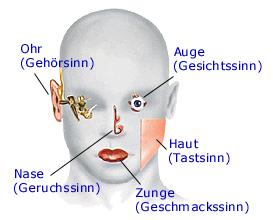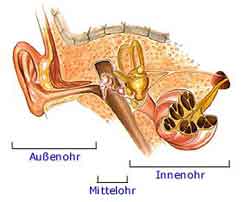Resources
Valuable resources are available for you – including NLP Practice Groups, NLP Library and NLP Online Community.
Lessons
Audio/Video Contributions
» Welcome
» What does NLP mean?
» External perception
Text Articles
» What is NLP?
» History of NLP
» NLP Presuppositions
Success Checks
» Testing 01
» Testing 02
» Testing 03
» Testing 04
Experience the world through our senses
Day by day, every person perceives millions of sensory impressions – fortunately, most of them only unconsciously. If we were aware of everything that simultaneously flows in through our senses, we could hardly orient ourselves. Fortunately, our subconscious filters out only the truly important impressions. Thus, it both limits and protects us the “Prison of the senses”.

Through the five sensory organs of our body, we perceive states and processes in the outside world. With eyes, ears, nose, tongue, and skin, we receive stimuli, convert them into electrical impulses and transmit them to the brain. There, our experiences of images, sounds, smells, taste, and touch are created.
The eye

The eye is our most important sensory organ – about 70% of all perceptions occur through sight. Photography was developed based on its model: A lens focuses light, the iris regulates the light intake, and receptor cells in the retina convert light into electrical signals. These signals travel via the optic nerves to the visual centers in the brain, which create the image of the world. Within a day, the eye muscles move thousands of times – even during sleep, during the dream phases.
The ear

With the ear, we not only perceive sounds and tones but also maintain balance. The cochlea and the balance organ are located in the inner ear. Fluid and sensory hairs register movements, inclinations, and accelerations. The auditory nerve and the balance nerve together form the eighth cranial nerve. When we hear, the ear converts sound waves into nerve impulses, which the brain interprets as sounds.
The nose

The nose serves not only for breathing but also for smelling. Interestingly, the nostrils alternate every few hours – while one actively smells, the other rests. In the olfactory mucosa, there are over ten million sensory cells, whose hairs capture scent molecules. These stimuli are transmitted via the olfactory nerve to the olfactory bulb, which relays them to the brain. Thus, our conscious smell impression is created.
The tongue
The tongue is extremely mobile due to its muscles and takes on many tasks: It directs the food, shapes it into swallowable portions, and enables tasting. On its surface, there are about 9000 taste buds that can distinguish sweet, sour, salty, bitter, and umami. Additionally, it gives us an amazing sense of textures through its fine touch receptors.
The skin
The skin is our largest sensory organ. It allows us to feel pressure, touch, temperature, and tension. Different receptors respond to different stimuli: Pacinian corpuscles register broad pressure, Merkel discs detect fine touches, Ruffini endings sense warmth, and Krause end bulbs detect cold. This information is transmitted via the spinal cord to the brain, which can thus regulate temperature and respond to touches.







